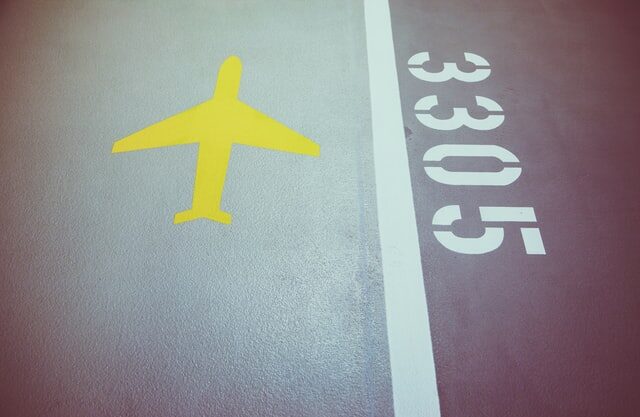You must have heard about the frequent flyer’s program from various airlines. A reward for choosing a particular airline to fly continuously around different regions across a country or the world.
But what if an airline starts rewarding you for not flying? Yes!! You read it right. The airline in the discussion is Tiger Airways which operated as Tigerair, a budget airline headquartered in Singapore. Tiger Airways was founded as an independent airline in 2003. In 2014 Singapore Airways (SIA) acquired Tiger Airways with a 56% stake. SIA merged Tiger Airways with its own low-budget airline Scoot and now they both operate together as Scoot Tigerair Pte Ltd under the brand name Scoot.
Tigerair Australia felt the need to give consumers a reason to choose Tigerair as their first port of call, rather than their last resort. So, they sought to re-evaluate their value proposition in a market still coming to terms with low-cost flight options.
No matter what country the consumer is from, the consumer feels ashamed to be seen flying with a low-cost airline. Australians are no different. 77% of Australians fly less than three times a year for the same reason. Tigerair realized it and came up with a brilliant insight.
Pertaining to this, Tigerair wanted the customer to feel smart for their money management instead of feeling cheap for flying via Tigerair. So they came up with a strategy.
Tigerair strategy was focused on achieving 3 key things:
1. They would make flying Tigerair something not to be ashamed of.
2. They would reset customer expectations about what to expect when they did fly with Tigerair.
3. They would de-position the big 3 airlines as offering false value.
In order to do that they created a bespoke CRM platform, the Infrequent Flyers Club, to change the brand image and drive engagement and sales. Don’t fly much? Join the club! Watch this video below to understand what this program is all about.
The CRM platform behind the Infrequent Flyers Club captured users’ travel habits and interests. The data enabled Tigerair to customize the membership to the individual interest, helping customers to know relevant sales fares and travel information. The user can return to the member’s portal at any time to update their status and check flight deals.
The program was launched through owned and earned channels like mainstream outlets, airline industry publications, air-travel forums, and social media. It also leveraged sponsorship with the Melbourne Strom Rugby League team. This was a fully integrated media campaign that included various channels available. List is as follows:
Sharing of weekly content was encouraged.
Paid included-
1. Social Platforms – Facebook, Twitter, Instagram, YouTube.
2. Digital display – Multichannel
3. Airport outdoor – Small Format
4. Radio
5. Cinema Owned: Ambient outdoor, Website, Facebook / Twitter
6. Terminal outdoor Earned
7. Digital PR – Blogs, New, Airline Industry Sources Mainstream PR – Broadcast & Press
As a Result..
The campaign captured the attention of the media and passengers alike, adding over 500,000 Infrequent Flyers to the Tigerair database and contributing to Tigerair’s first quarterly profit in five years.
The Infrequent Flyers Club gave Tigerair Australia a new lease on life and more importantly, delivered remarkable results:
– Half a million members
– $2 million in direct sales in the last 3 months
– 45 million target audience impressions
– Tigerair’s first profitable quarter in 5 years
– The campaign delivered in its first year an annualized ROI of 229%.
They also managed to
1. Increase airline revenue by 5% over 6 months
2. Attract 50,000 customers to our database
3. Make the campaign cost neutral in the first 6 months
Despite a sub-optimal brand reputation and a worrying rate of rejection, the appeal of the club was undeniable. The Infrequent Flyer Club campaign sparked a re-appraisal of Tigerair amongst a cynical audience whilst also driving sales.
The campaign was also widely awarded for both its creativity and effectiveness, including multiple Cannes Lions, a prestigious Creative Effectiveness Lion, as well as a Spikes Grand Prix and at the APAC Effie Awards.
A brand that people once loved to hate, and only flew as a last resort, became something people were buying into. Before I bid adieu to you I am leaving you with this hilarious advertisement about the campaign from Tigerair. Ciao Ciao!!
Interested in reading our Advanced Strategy Stories. Check out our collection.
Also check out our most loved stories below
IKEA- The new master of Glocalization in India?
IKEA is a global giant. But for India the brand modified its business strategies. The adaptation strategy by a global brand is called Glocalization
How Bata became India’s household name despite being a classy international brand?
Bata is not an Indian brand. It is as international as it can be. But what strategies made it India’s highest selling footwear brand?
Nike doesn’t sell shoes. It sells an idea!!
Nike has built one of the most powerful brands in the world through its benefit based marketing strategy. What is this strategy and how Nike has used it?
Domino’s is not a pizza delivery company. What is it then?
How one step towards digital transformation completely changed the brand perception of Domino’s from a pizza delivery company to a technology company?
What advertising strategy made TITAN an iconic watch brand?
What are the various advertising strategies that make Titan a consumer’s choice? How Titan decided to choose Mozart’s symphony as its tune for commercials?
WhatsApp “Photo Status” was a strategic move. How?
Whatsapp launched photo status in 2017. It was hated by many. But why it was a good move that improved the way you use application today?

